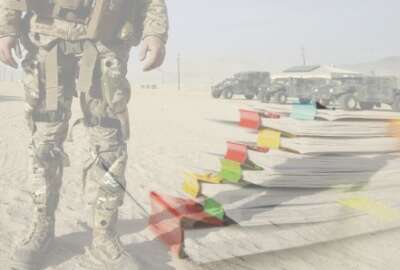

Although the Defense contracting community has never dealt with a situation quite like the current pandemic, the Pentagon's IG says there are enough lessons fro...
With billions of dollars in CARES Act funding yet to be spent and several billion more potentially in the appropriations pipeline, it’s far too early to tell how effectively the Defense Department is spending its share of the disaster funding.
But according to the Pentagon’s inspector general, DoD — and its auditors — have more than enough experience with prior emergencies to know what to do, and what not to do, to make sure money is spent well even when contracts have to be executed quickly.
In a new special report, drawing on 36 earlier audits that dealt with contracting during previous emergencies, the OIG tries to outline what it considers best practices for contracting under time pressure.
“It is a very fast paced, ever changing environment right now with this pandemic. But what contracting officers are experiencing right now is similar to pressures that were present during past disaster response and relief efforts. So our intent here was to highlight best practices and lessons learned that really span a significant portion of time,” Theresa Hull, the assistant inspector general for audit acquisition, contracting, and sustainment said in an interview for Federal News Network’s On DoD. “Our reports go back to Hurricane Katrina in 2005 but also include the more recent hurricanes, Florence and Irma, and we highlighted four areas that the contracting community should be aware of: Communication and coordination; documentation, consistency in the contracting process, and staffing and training.”
Beyond those precepts, in the new guide, the OIG also cautions DoD acquisition officials to be cautious in how they use undefinitized contract actions — awards that let contractors begin work before final terms are negotiated. The use of UCAs inevitably peaks during emergencies, when DoD components need new goods and services quickly. So far, they’ve been used for 129 contract actions worth $826 million.
And while they’re often appropriate, they’re also inherently risky, Hull said.
“The government could be in a sole source negotiation stance with a contractor, and that could lead to higher prices for the government. And when the government has less negotiating power in a sole source environment, those goods and services are definitely going to come at a higher price tag,” she said. “That’s especially true when the goods and services have already been delivered or the work has been completed.”
Besides that, the rules around UCAs let contractors bill the government for all of their costs until the point when they agree on terms around pricing and profit. Normally, those reimbursements are capped at 50% of the contract’s “not-to-exceed” amount, but those rules have been waived during the COVID-19 emergency.
“While the waiver is necessary for the response, the waiver of the threshold further removes the incentive for contractors to control their costs. And it’s one of the main reasons that UCAs need to be definitized as quickly as possible,” Hull said. “While UCAs can save contracting officers time on the front end, they spend a lot more time and effort coming to an agreement on price later. What we’ve seen in our work surrounding UCAs is that contracting officers are having to issue the contract and then continuously and constantly monitor the contract and work with the contractor to provide the needed information to ultimately negotiate and definitize the contract, and that can take months, sometimes even years.”
However, in many cases, DoD has been able to avoid the use of UCAs by having contract vehicles pre-arranged for supplies and services that tend to be needed during emergencies.
For example, the Army Corps of Engineers already had contingency construction contracts in place by the time it was called upon to start building field hospitals across the country. Similarly, the Corps has contingency contracts to deliver emergency power to hospitals and other critical facilities when it’s needed.
And the Defense Logistics Agency has numerous indefinite-delivery/indefinite-quantity contracts in place to deliver items like personal protective equipment.
“Federal agencies have used these contracts during the response to obtain this equipment, and as DoD begins to reopen, components that had no previous need for this equipment are now dependent on those supplies to resume their operations,” Hull said. “So if there’s existing capacity on these contracts, it would lessen the need to obtain these supplies through new awards.”
Copyright © 2024 Federal News Network. All rights reserved. This website is not intended for users located within the European Economic Area.
Jared Serbu is deputy editor of Federal News Network and reports on the Defense Department’s contracting, legislative, workforce and IT issues.
Follow @jserbuWFED


